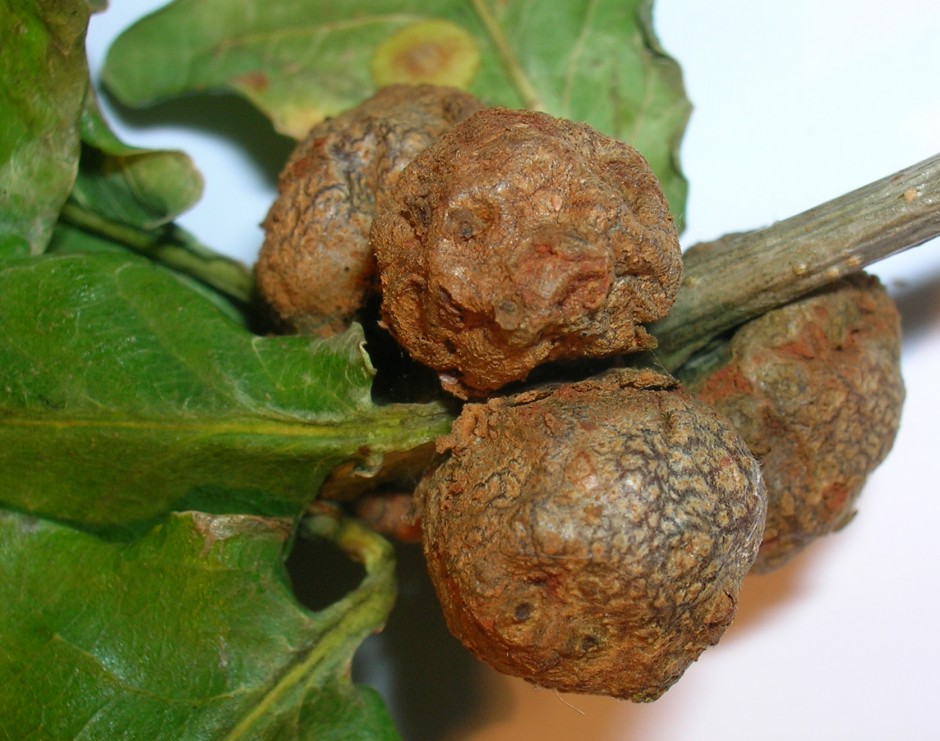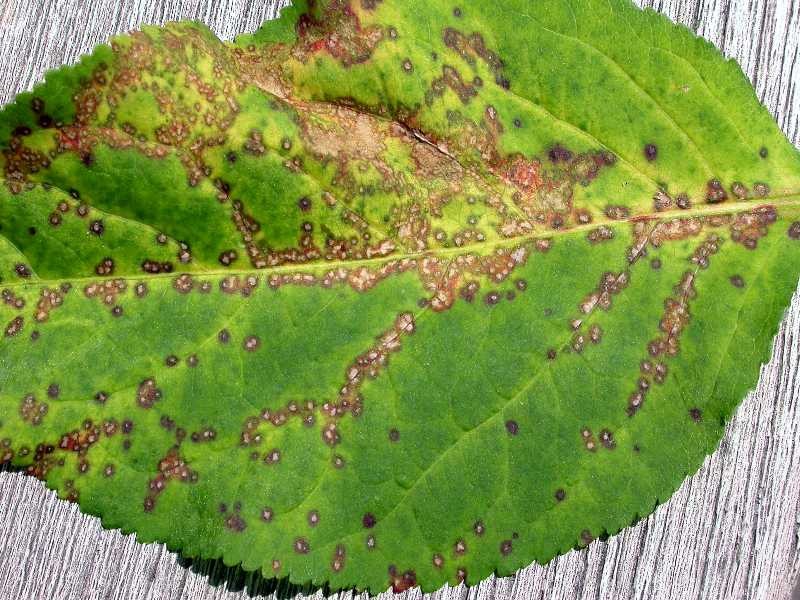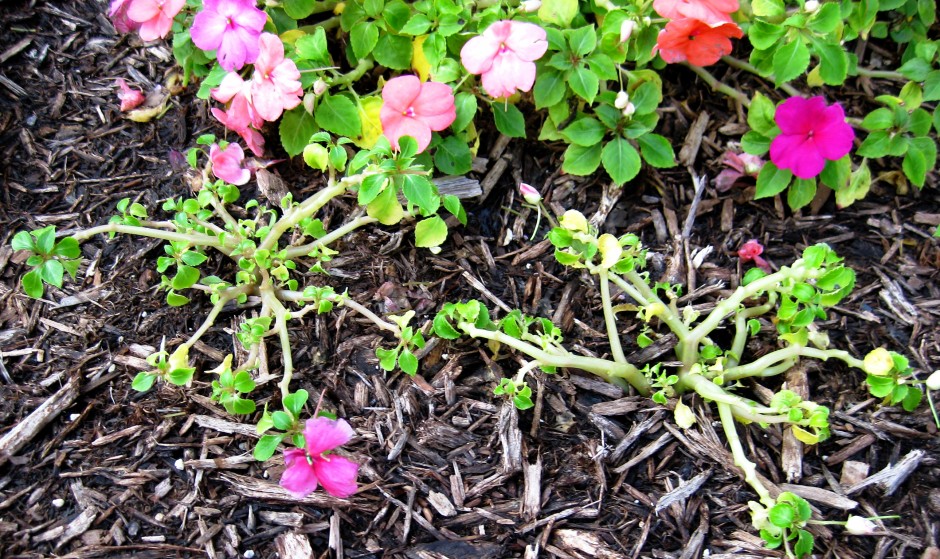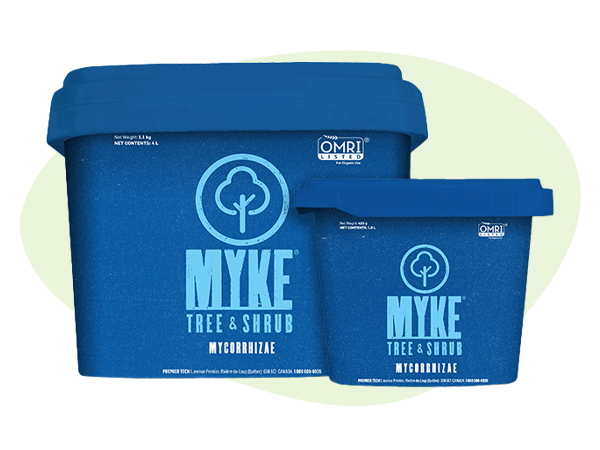Fungus and Disease Problems
Like humans plants gets sick too. Although most diseases or fungal problems can be solved and fixed there are some that can not be fixed. When we are looking at a problem it is always helpful if you have pictures a clipping of the leaves or branch (in a clear zip lock bag, in case it spreads) we may ask questions, but not limited to, about how plant was planted, where, soil type, how it was watered through out season, what roots were like when planted, if you have noticed insects/animals around, if and how plant was fertilized, etc.
Sun Burn
Sun burn can happen to any plant, even sun loving plants. Three common reasons for it happening though are:

- Putting a shade loving plant in direct afternoon sun
- Watering plants during the hottest time of the day, water acts like a magnifying glass and will burn leaves
- Moving a tropical, eg Hibiscus or Mandevillea, from the house with lower light non direct light to outside direct and high lighting
Sunburn although may not look so great will disappear once you move the plant to more shade, change your watering habits or gradually introduce your tropical to the sun.
Powdery Mildew
A common problem that usually occurs to plants that are annual or shrubs with broad leaves and are deciduous and happen for mainly two reasons.
- Plants are being watered too late in the day or evening and moisture is on the leaves all night

- The season is cool and wet
Powdery mildew is a sore sight but usually will not damage your plant in the long run. Try to water in the mornings or before noon if possible or between 5 pm and 7 pm during the long summer days. If the season is cool and wet, you can buy products to contain spreading. Clean up the leaves and possibly trim plant in autumn.
Always read the label if you are planning to put a product on a plant that will producing edibles. There are guidelines for every product that will be used on edibles.
Galls
This is a bulbous growth, swelling, thickening growth on the branches, trunk, leaves or shoots. There are normally 3 reasons;
- Fungal leaf or stem gall

- Bacterial gall
- Insect gall
All three have different treatment plans. Galls on leaves and small branches, cut off or remove the problem as you see them and spray with a fungicide next spring. Bacterial crown growth, there is no cure, but the tree can survive for many years with some removal of diseased branches. Unless the insect gall is causing die back or it is just unsightly you can leave the gall.
Anthracnose or Leaf Spot
This is a problem when we have a wet and humid summer or a cold and wet season. Although it is an unseemly sight on your plant it will

not kill the plant. In the fall clean up all leaves and get rid of them, as this problem is caused by spores and can survive winter. A proper clean up is a must. You can use products to correct this problem if you like. Most times it will go away the next spring as long as it is warm and drier than previous season.
Fire Blight
This disease is a very destructive and will spread. Blossoms and leaves of some twigs will suddenly wilt and turn black as if it was scorched by fire. Leaves curl and hang downwards. The bark at the base of a blighted twig becomes water soaked and then dark, sunken and dry. cracks may develop at the edge of the sunken area. In spring where the weather is warm and moist you may see brown ooze appear on sunken bark.

Since this disease is a serious one and can spread from trees to shrubs, it is easier to avoid it then get rid of it. In the case you do get it or have it, it is best to cut it down and destroy the plant via fire. *Do not shred into mulch and use it some where, and clean all pruners with bleach if it has had contact with diseased plant.
Imapatien Downy Mildew
With this disease Impatien plants loose their leaves and their flowers. The main cause of this is that consumers grow their impatiens in the same spot year after year after year. Many people believe that it is the seed that is affected and have heard this from different sources, this is not the case. You get this disease by planting the same plant, in this case Impatiens, in the same area year after year after year. What does this do? It makes your soil weak, any good bacteria or minerals get taken out of the soil by the plant and that makes way for bad pathogens to enter the soil, thus causing the Downy Mildew.
How do you control this Disease?
- If you have this disease in your garden now, it is there to stay

- Good news is though they are trying to breed a new variety of Impatien that is resistant to that disease
- You can use New Guinea Imp, Double Imp, Sunpatiens any other type of Impatien in the same spot because they are resistant to this disease
- If you do not have this disease, switch up your plant choices. You can use any other Impatien variety or there are Begonia and other shade plants that are not affected.























